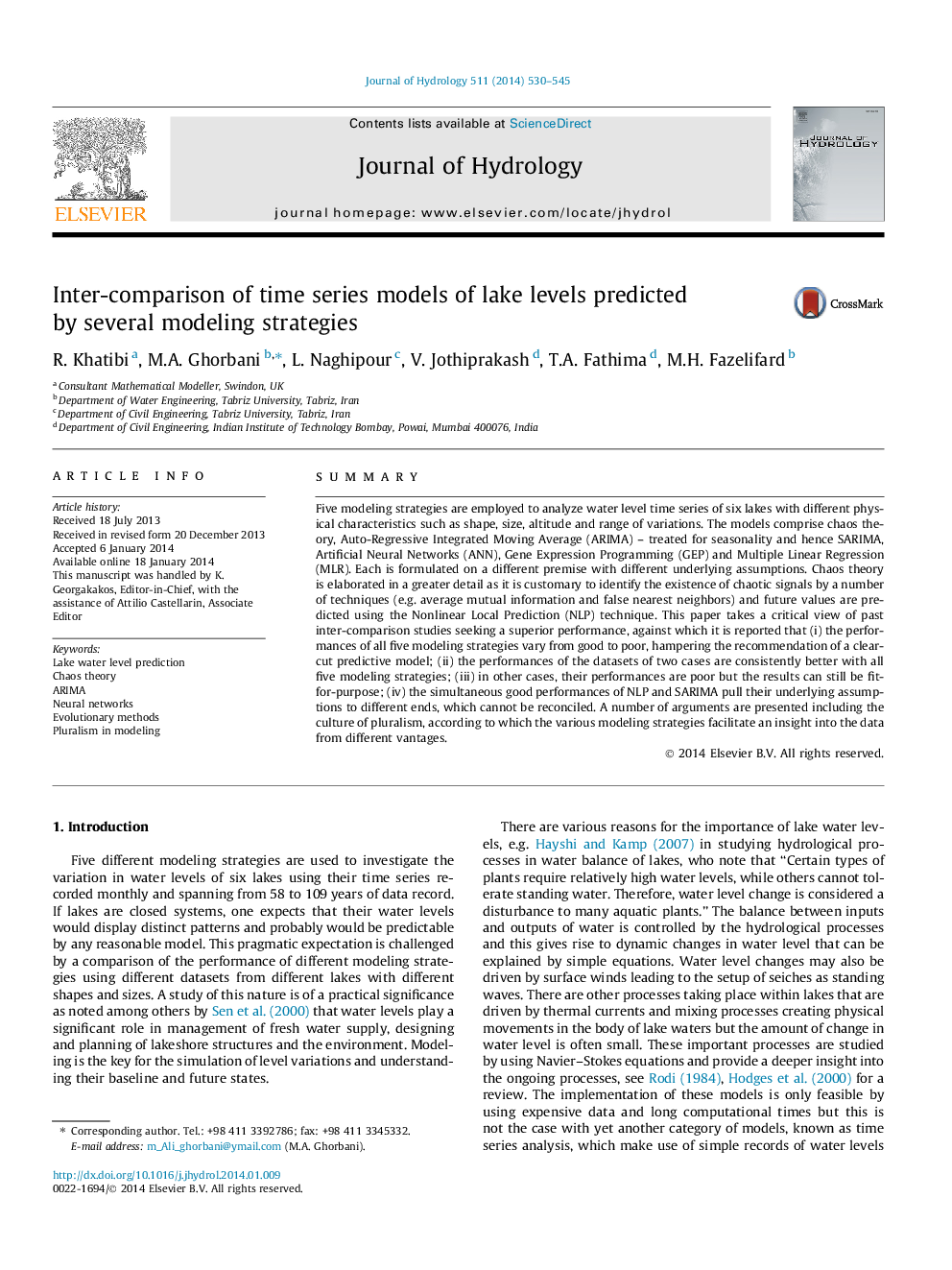| Article ID | Journal | Published Year | Pages | File Type |
|---|---|---|---|---|
| 6413312 | Journal of Hydrology | 2014 | 16 Pages |
â¢Five models are used to investigate monthly water level of six lakes.â¢Models comprise: chaos theory, SARIMA, ANN, GEP and MLR; the lakes features vary.â¢None of the model performance is outright good in all 6 cases.â¢All 5 models perform well in 2, satisfactorily in 1, but poorly in other cases.â¢The results may be seen as anecdotal evidence for pluralism in modeling cultures.
SummaryFive modeling strategies are employed to analyze water level time series of six lakes with different physical characteristics such as shape, size, altitude and range of variations. The models comprise chaos theory, Auto-Regressive Integrated Moving Average (ARIMA) - treated for seasonality and hence SARIMA, Artificial Neural Networks (ANN), Gene Expression Programming (GEP) and Multiple Linear Regression (MLR). Each is formulated on a different premise with different underlying assumptions. Chaos theory is elaborated in a greater detail as it is customary to identify the existence of chaotic signals by a number of techniques (e.g. average mutual information and false nearest neighbors) and future values are predicted using the Nonlinear Local Prediction (NLP) technique. This paper takes a critical view of past inter-comparison studies seeking a superior performance, against which it is reported that (i) the performances of all five modeling strategies vary from good to poor, hampering the recommendation of a clear-cut predictive model; (ii) the performances of the datasets of two cases are consistently better with all five modeling strategies; (iii) in other cases, their performances are poor but the results can still be fit-for-purpose; (iv) the simultaneous good performances of NLP and SARIMA pull their underlying assumptions to different ends, which cannot be reconciled. A number of arguments are presented including the culture of pluralism, according to which the various modeling strategies facilitate an insight into the data from different vantages.
